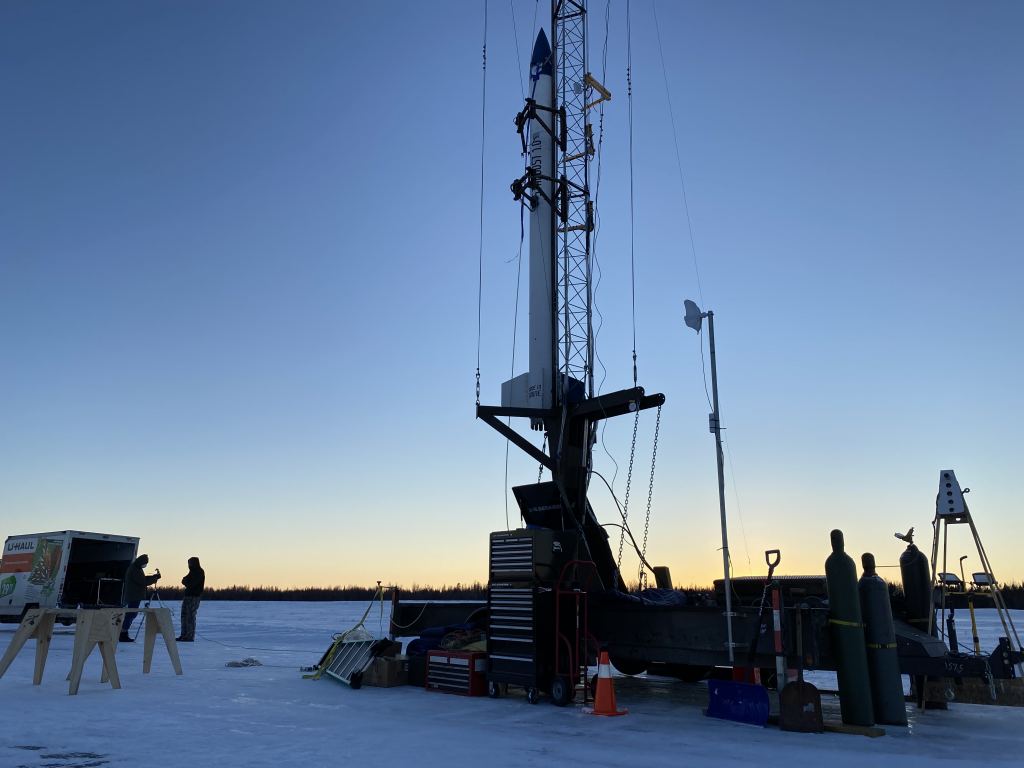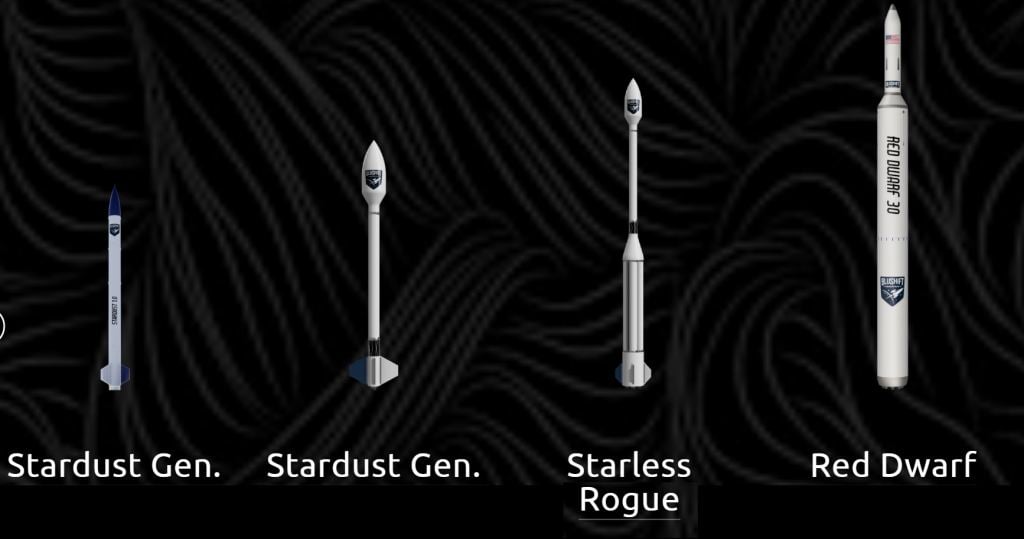Maine-based BluShift Aerospace launches of a unique rocket from a Cold War Air Force base.
A small company took a major step towards the reality of a 'Spaceport Maine' this past weekend. After several attempts, the Maine-based company BluShift Aerospace successfully launched its first rocket from Loring Commerce Center in Northern Maine this past weekend, with the liftoff of Stardust 1.0.
The day dawned clear, but a chilly -14 degrees Fahrenheit (-26 degrees Celsius). The launch of the single-stage 20-foot high Stardust 1.0 rocket went off at 2:47 PM Eastern Standard Time (EST)/19:47 Universal Time (UT) on Sunday, January 31st, reaching an apogee of 4,054 feet (1,236 meters). For the first launch, the rocket was actually purposely under-fueled to stay under FAA time and height restrictions for amateur rocketry, though the company has big plans for Stardust and a new generation of rockets, leading up to orbital launches from Maine in coming years.
This was Maine's first commercial rocket launch, and the first ever commercial rocket launch powered by a bio-derived fuel.
Several experiments and customer payloads were also onboard Stardust 1.0, including:
-A student cubesat payload courtesy of Falmouth High School complete with sensors, a transmitter and camera.
-Kellogg Research Labs based out of Nashua, New Hampshire included an experiment testing a vibration-dampening, memory shape nickel-titanium material for future rocket launches, known as nitinol.
-Rocket Insights also added a cubesat frame filled with Duch wafer cookies, known as 'stroopwafels,' in tribute to their Netherlands-based parent company.
"Everything looked very nominal," BluShift Aerospce CEO Sascha Deri told *Universe Today* after the launch. "we also gathered data on Stardust and downloaded that yesterday. The pressures in the combustion chamber, our oxidizer tank, the fuel injector valves, everything looked similar to static tests here in Brunswick."
Stardust 1.0 is unique in that it utilizes a proprietary rocket fuel, in a modular hybrid liquid/solid fueled rocket engine. The biofuel "Can be derived directly off of farms all across America," says Deri. "I discovered the bulk of the substance on my brother's farm here in north Yarmouth, Maine. We tried it out, and it worked better than petroleum fuel. It's also very close to carbon neutral."
BluShift Aerospace actually performed around 240 engine tests over the last four years leading up to the first launch. "You learn a lot about how to make the engine work, where things fail, and how to fix things quickly." Says Deri. This technical expertise came in handy during last Sunday's launch, enabling the team to troubleshoot and quickly reconfigure for a successful launch after two false starts. This capability is also a testament to the abilities of the hybrid liquid-solid motor. Virgin Galactic 's SpaceShipTwo also features a similar hybrid engine.
CEO Sasha Deri founded BluShift Aerospace in 2014. Based out of Brunswick in southern Maine, BlueShift Aerospace was awarded a NASA Small Business Innovation Research (SBIR) contract to develop its hybrid engine and fuel in mid-2019. BluShift Aerospace expects to feature a full-scale MAREVL (Modular Adaptable Rocket Engine for Vehicle Launch) motor on the company's next launch, Stardust 2.0.
Loring Commerce Center was Loring Air Force base until 1994. Loring was founded in the 1950s as a staging post for aircraft and cargo headed across the Atlantic to Europe, and later hosted B-52 bombers for Strategic Air Command during the Cold War. Along with Presque Isle Air Force Base, Loring was strategic as a jumping off point both to Europe and over the Arctic to the Soviet Union.
The launch was also put on hold by a (possible) first in rocketry: a 'snowmobile in the zone.' The successful conclusion of the launch also featured the first rocket recovery by snowmobile.
What’s Next for BluShift Aerospace
Watch for the next BluShift Aerospace launch from Loring sometime in the next year. This time, the Stardust 2.0 launch will aim for the Kármán Line 62 miles (100 kilometers) up and space. Ultimately, BluShift Aerospace is looking to give customer payloads 6-8 minutes of zero-g near apogee, longer than many sub-orbital flights. BluShift Aerospace plans to build more rockets, including a 3-stage Red Dwarf rocket, capable of lofting a 66-pound (30 kilogram) payload into low-Earth orbit.
The goal is for the sub-orbital Starless Rogue rocket to feature the same payload capacity at Red Dwarf. BluShift wants to do orbital polar launches from an as of yet-to-be selected site along the coast of Maine starting in 2023. Though inland, Deri also notes that Loring in Northern Maine would still be an ideal site for 'horizontal space launches' similar to those planned out of Mojave Spaceport America in New Mexico.
Congrats to BluShift Aerospace on putting the state of Maine in the private rocketry game, with potential for spaceflight missions to come.
-Lead image: Launch of Stardust 1.0 at Loring. Credit: BluShift Aerospace/Betta Stothart.
 Universe Today
Universe Today




